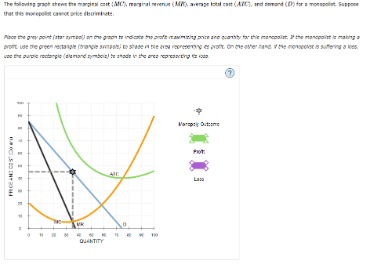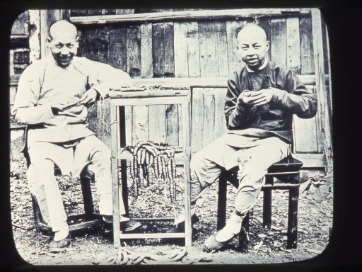Content
- VIRGINIA APPROVES THE FIRST 10 AMENDMENTS, RATIFYING THE BILL OF RIGHTS
- NATIONAL BROADCASTING CO., INC. ET AL. V. UNITED STATES ET AL.
- MCCUTCHEON V. FEDERAL ELECTION COMMISSION
- THE PEOPLE OF THE STATE OF CALIFORNIA V. LAWRENCE FERLINGHETTI
- CONGRESS PASSES THE ESPIONAGE ACT
- THE U.S. CONSTITUTION IS ADOPTED INTO LAW AND THEN RATIFIED BY THE STATES
- A Person

The 19thcentury witnesses a Supreme Court hostile to many claims of freedom of speech and assembly. Fewer than 12 First Amendment cases come before the court between 1791 and 1889, according to First Amendment scholar Michael Gibson.
What is the meaning of amendment in law?
An amendment is a section that is added to a law or rule in order to change it.an amendment to the defense bill.
This History And Purpose Of The Amendment -domain content provided by the Independence Hall Association, a nonprofit organization in Philadelphia, Pennsylvania, founded in 1942. No law, varying the compensation for the services of the Senators and Representatives, shall take effect, until an election of Representatives shall have intervened. The transportation or importation into any State, Territory, or possession of the United States for delivery or use therein of intoxicating liquors, in violation of the laws thereof, is hereby prohibited. Sections 1 and 2 shall take effect on the 15th day of October following the ratification of this article.
VIRGINIA APPROVES THE FIRST 10 AMENDMENTS, RATIFYING THE BILL OF RIGHTS
On the other side of the scale are legitimate government interests, such as public safety. The Article of Confederation lists eleven references to“person/s.” The Constitution lists “person” or “persons” 49 times to explicitly describe, clarify and mandate a constitutional legal standing as to a “person” his or her constitutional duty and rights, what he or she can do or not do. The position of the Second Amendment in relation to the First is also crucial; the Second Amendment protects the First and must be acted upon when the First is infringed upon.
- Justice Amy Coney Barrett dissent in Barr v Kanter Second Amendment argument acquiesced to 42 references to “person/s, of which 13 characterize either a gun or firearm.
- This is because some states only agreed to ratify the Constitution once they knew a Bill of Rights would soon be added.
- Although they had few early victories, these organizations began to create a body of law that made First Amendment freedoms, privacy rights, and the principles of equality and fundamental fairness come alive.
- On Sept. 12, newspaper editor Benjamin Franklin Bache, the grandson of Benjamin Franklin, is arrested under the Sedition Act for libeling President John Adams.
- InMiami Herald Publishing Co. v. Tornillo,the U.S. Supreme Court invalidates a state law requiring newspapers to give free reply space to political candidates the newspapers criticize.
- General Ambrose Burnside of the Union Army orders the suspension of the publication of the Chicago Times on account of repeated expression of disloyal and incendiary sentiments.
The Second https://intuit-payroll.org/, ratified in 1791, was proposed by James Madison to allow the creation of civilian forces that can counteract a tyrannical federal government. Anti-Federalists believed that a centralized standing military, established by the Constitutional Convention, gave the federal government too much power and potential for violent oppression. Some southern states began actively passing laws that restricted the rights of former slaves after the Civil War, and Congress responded with the 14th Amendment, designed to place limits on states’ power as well as protect civil rights. To be readmitted to the Union after the Civil War, southern states had to ratify the 14th Amendment. Initially, Native Americans were not granted citizenship by this amendment because they were under the jurisdiction of tribal laws.
NATIONAL BROADCASTING CO., INC. ET AL. V. UNITED STATES ET AL.
The Supreme Court rules inNew York v. Ferberthat child pornography is not protected by the First Amendment. The Supreme Court rules inParis Adult Theatre I v. Slatonthat a state may constitutionally prohibit exhibitions or displays of obscenity, even if access to the exhibitions is limited to consenting adults. InRed Lion Broadcasting Co. v. Federal Communication Commission, the Supreme Court finds that Congress and the FCC did not violate the First Amendment when they required a radio or television station to allow response time to persons subjected to personal attacks and political editorializing on air. The Supreme Court allows the NAACP of Alabama to withhold its membership list from Alabama lawmakers. InNAACP v. Alabama, the Court states that the demand by Alabama officials for the NAACP to provide them with a membership list violates members’ associational rights. Alexander Meiklejohn publishes his book “Free Speech and its Relation to Self-Government.” The exact date of the book’s publication in 1948 could not be found. General Ambrose Burnside of the Union Army orders the suspension of the publication of the Chicago Times on account of repeated expression of disloyal and incendiary sentiments.

InAbood v. Detroit Board of Education, the Supreme Court declares that a state may require a public employee to pay dues to organizations such as unions and state bars, as long as the money is used for purposes such as collective bargaining and contract and grievance hearings. The Court notes that, pursuant to the First Amendment, state workers may not be forced to give to political candidates or to fund political messages unrelated to their employee organization’s bargaining function. The Supreme Court rules that the First Amendment does not apply to privately owned shopping centers. InHudgens v. National Labor Relations Board, the Court holds that as long as the state does not encourage, aid or command the suppression of free speech, the First Amendment is not subverted by the actions of shopping-center owners. Buckley v. Valeorevolves around the Federal Election Campaign Act of 1971, as amended in 1974, which contained a large variety of restrictions on political campaign giving and spending. Along with Senator James Buckley of New York, various federal officeholders, candidates, and supporting political organizations brought suit against appellees seeking declaratory and injunctive relief against several statutory provisions on various constitutional grounds. The Supreme Court ruled that certain provisions of the Federal Election Campaign Act of 1976 violate the First Amendment.
MCCUTCHEON V. FEDERAL ELECTION COMMISSION
School-teacher John Thomas Scopes is found guilty of violating a Tennessee law which prohibits teaching the theory of evolution in public schools. The case pits famed orator William Jennings Bryan against defense attorney Clarence Darrow. ThePetition of Rightis a statement of the objectives of the 1628 English legal-reform movement that leads to civil war and the deposing of King Charles I in 1649. Native Americans were entirely outside the constitutional system, defined as an alien people in their own land. They were governed not by ordinary American laws, but by federal treaties and statutes that stripped tribes of most of their land and much of their autonomy. The Bill of Rights was in force for nearly 135 years before Congress granted Native Americans U.S. citizenship. The Bill of Rights seemed to be written in broad language that excluded no one, but in fact, it was not intended to protect all the people – whole groups were left out.
- The founding fathers did not use explicit Biblical examples to support their arguments because they considered it more appropriate to use non-sectarian terminology in the legal sphere.
- It all started with the efforts of organizations like the Women’s Christian Temperance Union and the Anti-Saloon League.
- The Court concludes that the act, which makes it a crime to display indecent or patently offensive material on the Internet where a child may find it, is too vague and tramples on the free speech rights of adults.
- In 1949, the University of Oklahoma admitted George McLaurin, an African American, to its doctoral program.
- When the OFR verifies that it has received the required number of authenticated ratification documents, it drafts a formal proclamation for the Archivist to certify that the amendment is valid and has become part of the Constitution.
- The Supreme Court rules inTinker v. Des Moines Independent School Districtthat Iowa public school officials violated the First Amendment rights of several students by suspending them for wearing black armbands to protest U.S. involvement in Vietnam.
The Progressives argued that this setup was leading to “legislative corruption” and “electoral deadlocks.” James Madison was responsible for drafting the document, and originally wrote 17 sections. This number was whittled down to 12, but only ten of which were ratified by a majority of the States. The Congress shall have power to lay and collect taxes on incomes, from whatever source derived, without apportionment among the several States, and without regard to any census or enumeration.
The Court concludes that the act, which makes it a crime to display indecent or patently offensive material on the Internet where a child may find it, is too vague and tramples on the free speech rights of adults. The Supreme Court upholds the power of the Federal Communications Commission to regulate indecent speech broadcast over the air. InFCC v. Pacifica, the Court allows FCC regulation because the broadcast media are a “uniquely pervasive presence” and easily accessible to children.
What is the history of the First Amendment?
The First Amendment was adopted on December 15, 1791 as part of the Bill of Rights—the first ten amendments to the United States Constitution. The Bill of Rights provides constitutional protection for certain individual liberties, including freedoms of speech, assembly and worship.
InNew York Times v. United States,the U.S. Supreme Court allows continued publication of the Pentagon Papers. InEpperson v. Arkansas,the U.S. Supreme Court invalidates an Arkansas statute prohibiting public school teachers from teaching evolution. The Court finds that the statute violates the establishment clause because it bans the teaching of evolution for religious reasons. The U.S. Supreme Court strikes down the practices of requiring daily Bible readings in public schools in the companion casesAbington School District v. Schemppand Murray v. Curlett. “They are religious exercises, required by the States in violation of the command of the First Amendment that the Government maintain strict neutrality, neither aiding nor opposing religion,” Justice Tom Clark writes for the Court.
Raising a reserve force of say 2-3 million militiamen/women, would certainly give an adversary something to think about. In some 229 years neither law professors, academic scholars, teachers, students or congressional legislators after much debate have not been able to satisfactorily explain or demonstrate the Framers intended purpose of Second Amendment of the Constitution. I had taken up that challenge allowing Supreme Court Justice Amy Coney Barrett’s dilemma to understand the true intent of the Second Amendment. This must be wrong – there were no ‘rights’ to arms only permission from controlling powers to have arms. Surely in the unwritten constitution of England there was never a ‘cannot be infringed’ as in the US one. The founding fathers, from the lessons learned from battles fought by men such as Cromwell and Washington, understood that for a country to be free and prosperous, the people must hold the monopoly of force. The monopoly of force must never rest in the hands of a select few.














